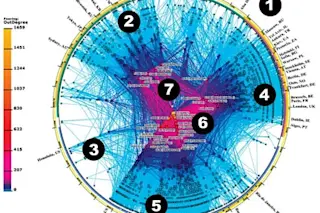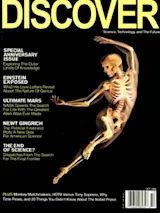Information moving through cyberspace travels in tiny packets that hopscotch around the world. Using data from a two-week stretch in April 2005, the Cooperative Association for Internet Data Analysis (CAIDA) traced these packets' paths from hub to hub and country to country to capture a snapshot of the worldwide network topology.
1 FLAT EARTH SOCIETY
CAIDA's map represents a flattened Earth, with cities positioned around the circle. Tracing the circumference clockwise corresponds to moving from east to west. Each square represents a data hub, which lines up on a spoke with the city in which it is registered. The closer to the center it lies, the more data it traffics.
2 SINOSNUB
The United States owns 74 percent of the 4 billion available Internet protocol (IP) addresses. China's stake amounts to little more than that of an American university. Not surprisingly, China is championing the next wave of the Internet, ...















